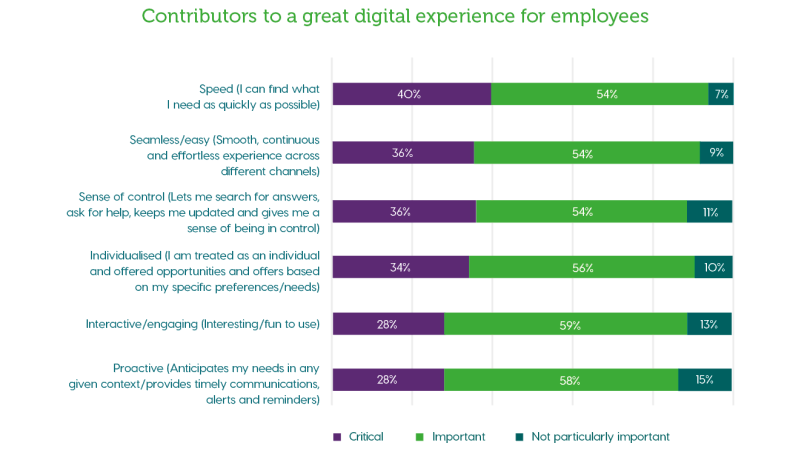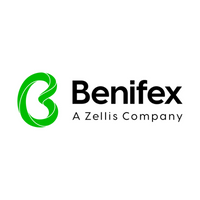How to create a digital benefits platform that will engage staff
Our expectations have adapted to technology. We have all become natives in a digitally savvy workforce. Yet employee benefits schemes are failing to live up to their strategic objectives because of the retro technology they are being served up on. Every day, organisations shackle their HR teams – and employees – with the benefits platform equivalent of a Nokia 1100. As a result, reward leaders are left struggling to show the strategic importance of benefits due to a three-pronged catch-22:
Investment gets sucked into the increased admin burden of poor technology and manual processes that come with it.
Legacy platforms deliver low levels of employee engagement with benefits.
The business case is further undermined by a lack of insight and proof points.
So, before you take the leap onto your next employee benefits platform, ask your prospective provider these key questions:
1. How is the platform going to address my big problems?
Most HR projects miss implementation deadlines. A third of them are significantly over budget and 42% of them are rated as not fully successful after two years. A 2019 survey of HR and benefits leaders showed the biggest challenges with reward and benefits today were:
• Lack of budget (44%)
• Increasing employee expectations (41%)
• Admin burden (33%)
Lack of budget
For more than a couple of hundred employees, a ‘plug and play’ benefits solution that can be turned on overnight is a false economy. Let the business case drive your platform strategy – not the budget.
Increasing employee expectations
It’s easy to create an employee benefits platform that performs the functions needed, but it takes experience, expertise and technological sophistication to create one that is simple and engaging to use. That is to say, a truly exceptional benefits platform requires expertise in both technology and employee benefits.
Admin burden
Some technological solutions might fulfil the basic requirement for a platform, but the experience it delivers is impersonal, clumsy and out of kilter with the rest of the workplace. They frustrate, they over-complicate and, as a result, they fail.
2. How will it meet the growing expectations of our employees?
Reward leaders want their benefits programmes to promote wellbeing and engender loyalty, but they don’t, because their people aren’t engaging with their benefits technology.
Despite companies spending a huge one-third of their payroll budget on benefits, their expectations are dashed because the platforms they have invested in just don’t make for an exceptional experience.

3. How will the platform ensure that the content and communications my employees receive globally is relevant and timely?
In the new hybrid-working world, it’s more important than ever to communicate with employees with integrity, timeliness and relevance. Typically, there are three layers to any communications: those that you want to communicate globally, those that you want to communicate at a country level and then those where you are trying to communicate with a specific demographic.
Ask your potential provider how their platform supports this model. What real-time data will be at your disposal? How is that data accessed? How is it presented as information and insight (or is that down to you)?
Use a specific example to find out how your potential technology partner will navigate any complexity that may exist within your plans and create a truly personalised experience for employees regardless of the legacy groups or historic acquisitions that may sit within your organisation.
Content and communications are all too often overlooked but there is a huge benefit to getting it right. Helping to effectively communicate the information an employee needs around access to benefits or funding at an employee level begins to create that consumer-grade experience people have come to expect. Certainly, the most successful schemes have data-driven communications at their core.
4. What strategic insight will I get from the platform?
Of the 250 benefits professionals we recently surveyed, virtually all of them (99%) believed that data-driven benefits and rewards can deliver better outcomes for organisations. And 84% think insight will give their organisation a competitive edge when it comes to benefits. And yet:
• Only 47% use data to personalise rewards based on attitudes and preferences
• 66% worry they are behind competitors in how they use data
•Only 43% use data to improve the employee experience
Getting the right benefits to the right people is going to be more important than ever this year, right up there with knowing which parts of your reward strategy are driving engagement. And employees expect you to be using data to offer a better experience; with 43% believing employers could better use employee data to provide more personalised employee experiences. Yet only half of the reward leaders we spoke to have the capability to even measure employee engagement with benefits, never mind their return on benefits investment.
Checklist for benefits data insights
• What are people doing? Who’s taking what, and how much?
• What’s missing? Look at the existing suite of benefits and identify obvious gaps.
• Who am I serving? 63% of employees say they expect their employer to offer them a personalised employee experience – it’s your behavioural data that’s going to deliver the targeted benefits that deliver that experience.
• What’s the benchmark? Look at your own take-up data compared with other organisations in your sector. Does your particular sector have success with this benefit? Is take-up higher or lower than the overall average?
Being able to organise and view your data in real time, in one place will inform your strategy. Then let technology do the work: 71% of reward directors think hyper-personalisation driven by AI will characterise benefits provision in most companies in the next five years.
The stats speak for themselves: the opportunity for evidence-based benefits strategies is being missed. Even the most rudimentary data analysis is currently being overlooked. Data is most likely to be used to identify the most, and least, popular benefits options and to inform the optimal mix of salary and flexible benefits by employee type.
Supplied by REBA Associate Member, Benifex
The home of award-winning employee benefits, reward, recognition, & communications.








